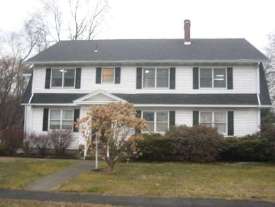CSI Home Inspectors NY
Latham NY 12110-0143

Summary
| Client(s): | Phil Mabey |
| Property address: | 1 Burhans Pl Delmar NY 12054-1201 |
| Inspection date: | Wednesday, February 28, 2024 |
This report published on Friday, March 1, 2024 7:48:42 AM EST
This report is the exclusive property of this inspection company and the client(s) listed in the report title. Use of this report by any unauthorized persons is prohibited.The scope of this inspection is all components designated for inspection in the ASHI Standards of Practice are inspected, except as may be noted in the “Limitations of Inspection” sections within this report. This inspection is visual only. A representative sample of building components are viewed in areas that are accessible at the time of the inspection. No destructive testing or dismantling of building components is performed. It is the goal of the inspection to put a home buyer in a better position to make a buying decision. Not all improvements will be identified during this inspection. Unexpected repairs should still be anticipated. The inspection should not be considered a guarantee or warranty of any kind. We do not perform environmental inspections. We do not perform asbestos inspections, mold inspections, or inspect for buried oil tanks. If any of these potential concerns are obvious, we may discuss or point them out. We do not know if there has been oil leakage or any other environmental concerns with this property. Mold inspections are not performed unless otherwise contracted for in writing. We do not inspect furnace or boiler internals and distribution systems. Please refer to the inspection agreement for a full explanation of the scope of the inspection.
| Safety | Poses a safety hazard | |
| Repair/Replace | Recommend repairing or replacing | |
| Repair/Maintain | Recommend repair and/or maintenance | |
| Maintain | Recommend ongoing maintenance | |
| Evaluate | Recommend evaluation by a specialist | |
| Monitor | Recommend monitoring in the future | |
| Comment | For your information |
Exterior Grounds
Exterior Walls and Foundation
Roof and Ventilation
Attic Structure
General Interior
Bathrooms
Kitchen
Fireplace
https://www.reporthost.com/?CSIA
Basement
- Repairing, installing or improving rain run-off systems (gutters, downspouts and extensions or drain lines)
- Improving perimeter grading
- Repairing, installing or improving underground footing and/or curtain drains
Heating, Ventilation and Air Condition (HVAC)
Plumbing System
Electrical System
